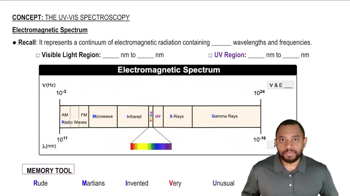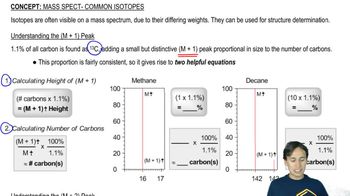Identify the important bands you would expect to find in an IR spectrum for the following molecules.
(c)

 Verified step by step guidance
Verified step by step guidance Verified video answer for a similar problem:
Verified video answer for a similar problem:



 16:47m
16:47mMaster Common IR Frequencies with a bite sized video explanation from Johnny
Start learning